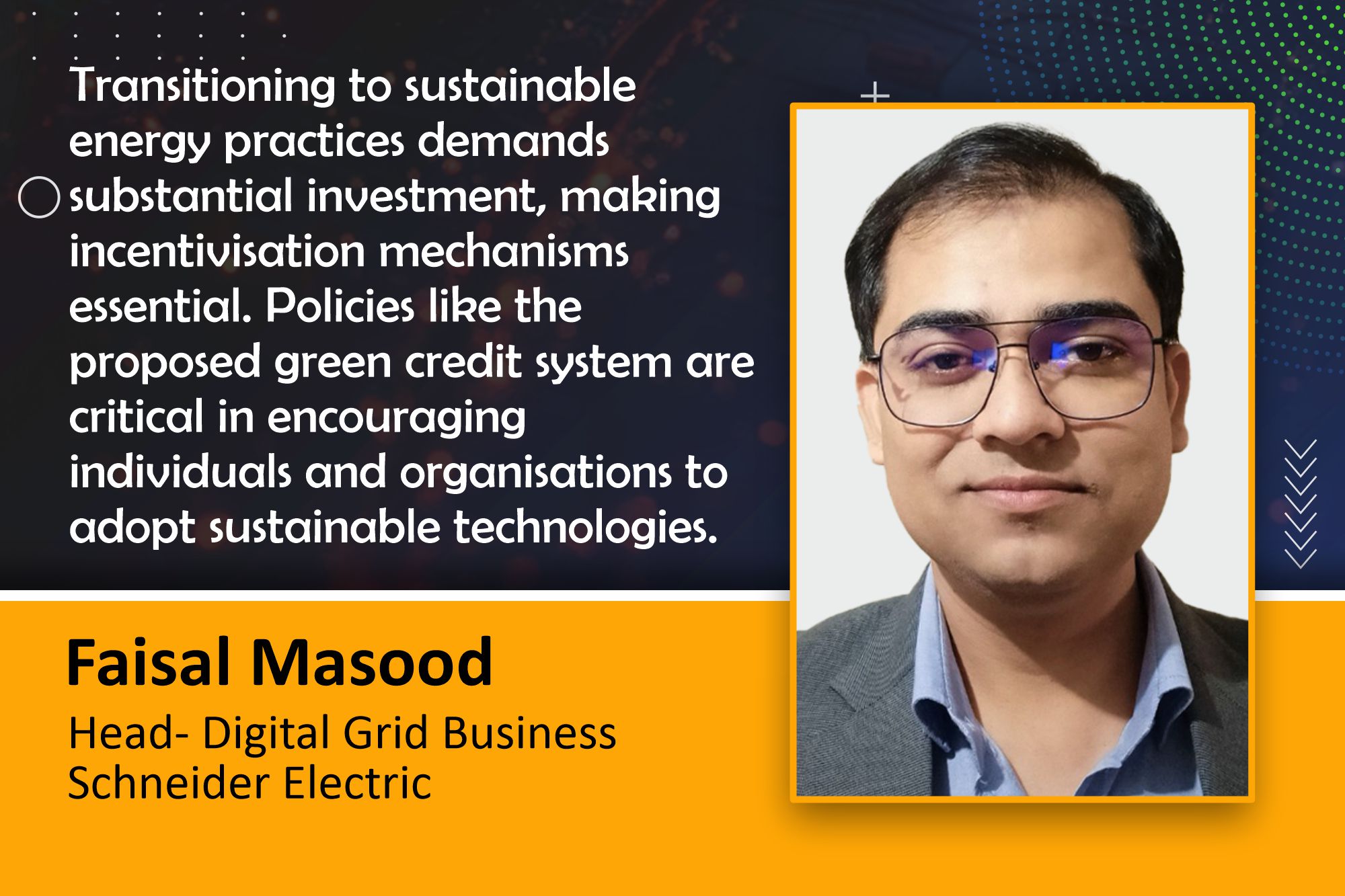Rapid industrialisation driving energy consumption patterns evolution in India
By EPR Magazine Editorial January 27, 2025 3:32 pm IST
By EPR Magazine Editorial January 27, 2025 3:32 pm IST

India stands at the cusp of a transformative energy evolution. Ranked third globally in power consumption, following the U.S. and China, the nation is poised to witness a significant surge in energy demand. With aspirations to become a $7 trillion economy by 2030, every 1 percent increase in GDP is projected to result in a corresponding 0.8 percent rise in power demand. This anticipated growth is accompanied by the need to achieve ambitious sustainability targets, such as the commitment made at COP26 to become net zero by 2070 and reduce the carbon footprint by 20 billion tonnes.
Rapid industrialisation
India is undergoing rapid industrialisation and urbanisation, and the energy consumption patterns are changing. By 2030, nearly 40 percent of India’s population is expected to reside in urban areas, resulting in a sharp increase in urban energy demand. India’s per capita power consumption is approximately one-third of the global average, but this is set to double by the end of the decade. Meeting this growing demand while adhering to climate commitments presents a dual challenge of scaling up energy generation and integrating sustainability into the energy ecosystem.
To achieve these goals, the Indian government has introduced various initiatives, including schemes like Saubhagya Yojana, PM-KUSUM, and the National Green Hydrogen Mission. These programmes aim to enhance energy access, promote renewable energy adoption, and reduce dependence on fossil fuels. Transitioning to sustainable energy practices demands substantial investment, making incentivisation mechanisms essential. Policies like the proposed green credit system are critical in encouraging individuals and organisations to adopt sustainable technologies.
The energy grid is transforming from a traditional centralised model to one that includes decentralised and off-grid systems. Distributed energy resources (DERs), including rooftop solar and battery storage, are becoming integral to the grid. However, this shift introduces complexity in grid management. DER integration requires robust planning to ensure grid stability, sufficient capacity and reliable demand-response mechanisms.
Facing challenges
One major challenge is the power sector’s rising complexity of revenue models. Billing structures are no longer uniform; they vary based on peak and non-peak hours, power quality, and the presence of prosumers who both consume and produce energy. Introducing electric vehicles (EVs) adds another layer of complexity to energy demand management.India also faces significant challenges in reducing Aggregate Technical and Commercial (AT&C) losses, which currently stand at 17-18 percent. Certain states, such as Jammu and Kashmir and Jharkhand, report losses exceeding 40 percent, highlighting the need for systemic improvements. Grid resilience is another pressing concern. The energy system must be capable of withstanding severe weather events and restoring operations swiftly in the face of adversities.
Digitisation and advanced technologies offer potential solutions to these challenges. Geospatial Information Systems (GIS) can map electrical assets and provide insights for lifecycle management, health indexing and fire risk assessment. Advanced Distribution Management Systems (ADMS) enable utilities to monitor and manage energy distribution effectively at a city or regional level. Similarly, Distributed Energy Resource Management Systems (DERMS) can streamline the integration of renewable resources and empower prosumers through platforms that incentivise their participation.
Low-voltage grid monitoring is emerging as a critical focus area. While automation platforms like SCADA and ADMS handle distribution transformer-level data, the low-voltage network between the distribution transformer and consumer energy meters remains largely unmonitored. Globally, utilities are piloting low-voltage grid automation to improve local energy management, and India must follow suit to enable an end-to-end digitised energy ecosystem.
Cybersecurity is another growing concern in the digital grid era. Utilities must adopt robust systems to detect and mitigate cyber threats in real-time, ensuring the grid’s safety and reliability.
We use cookies to personalize your experience. By continuing to visit this website you agree to our Terms & Conditions, Privacy Policy and Cookie Policy.